
How to Use adaptor 12v: Examples, Pinouts, and Specs
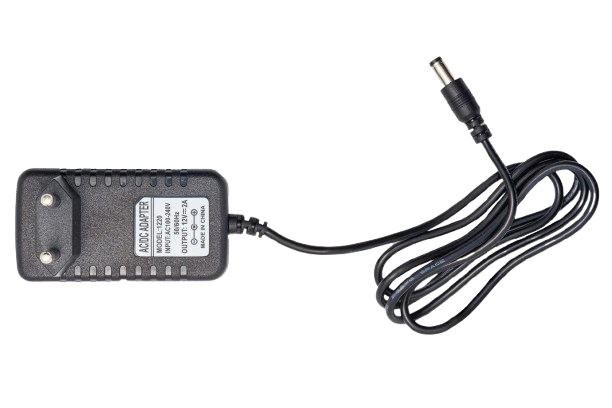
 Design with adaptor 12v in Cirkit Designer
Design with adaptor 12v in Cirkit DesignerIntroduction
The Adaptor 12V by Power (Manufacturer Part ID: Power) is a device designed to convert electrical power from a standard AC outlet (typically 110V or 220V, depending on the region) to a stable 12-volt DC output. This adaptor is widely used to power a variety of electronic devices, circuits, and small appliances that require a 12V DC input.
Explore Projects Built with adaptor 12v
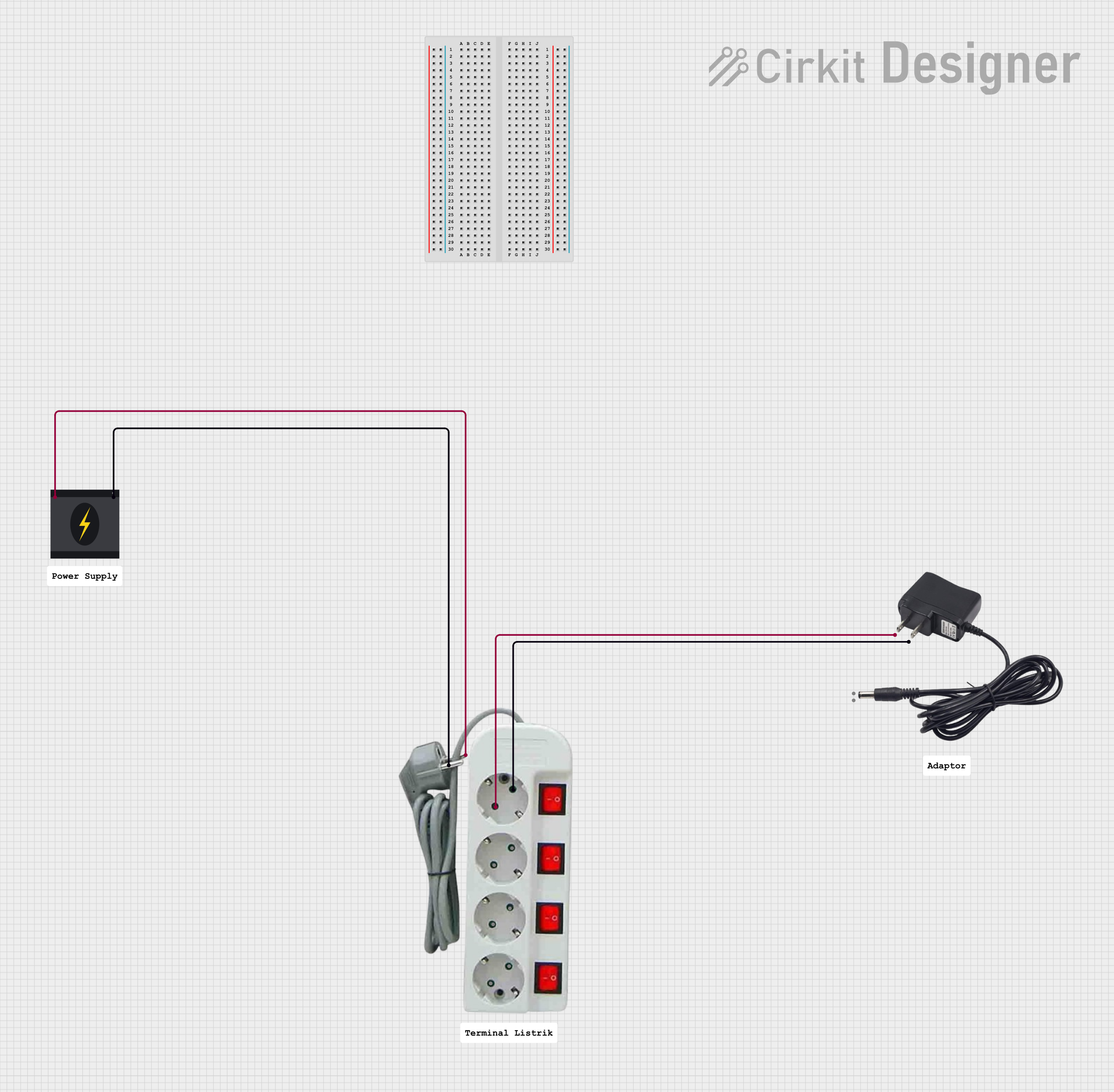
 Open Project in Cirkit Designer
Open Project in Cirkit Designer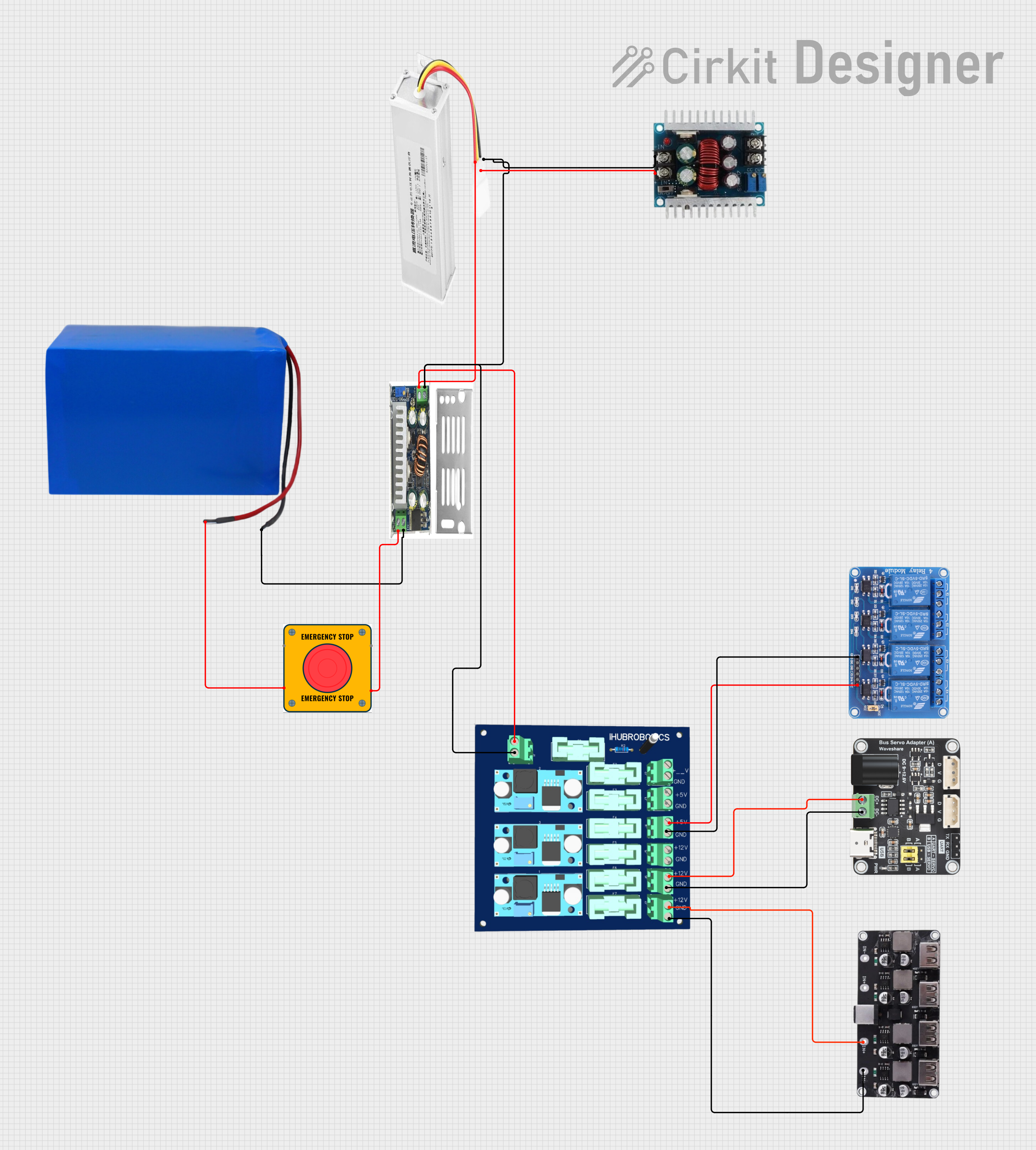
 Open Project in Cirkit Designer
Open Project in Cirkit Designer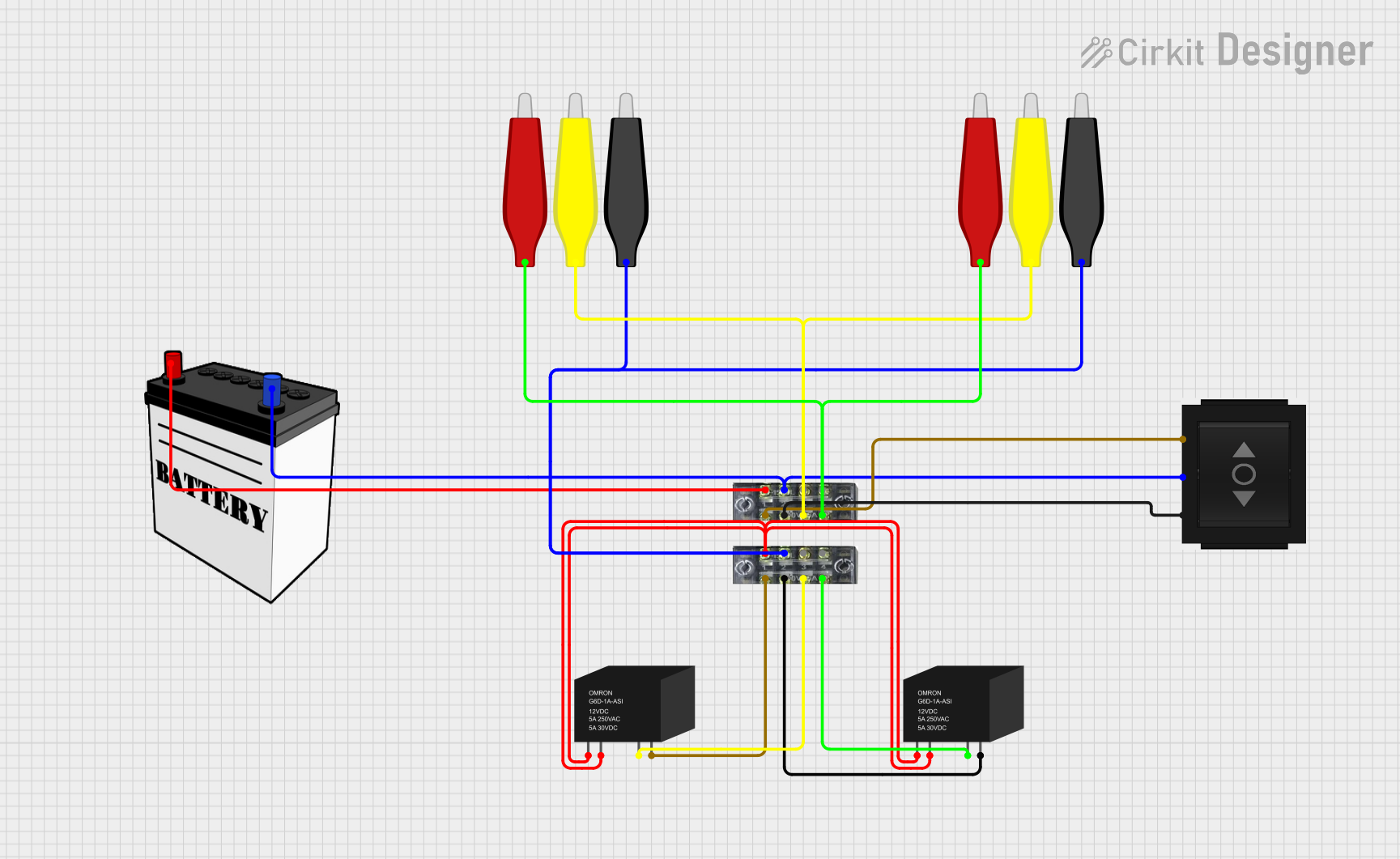
 Open Project in Cirkit Designer
Open Project in Cirkit Designer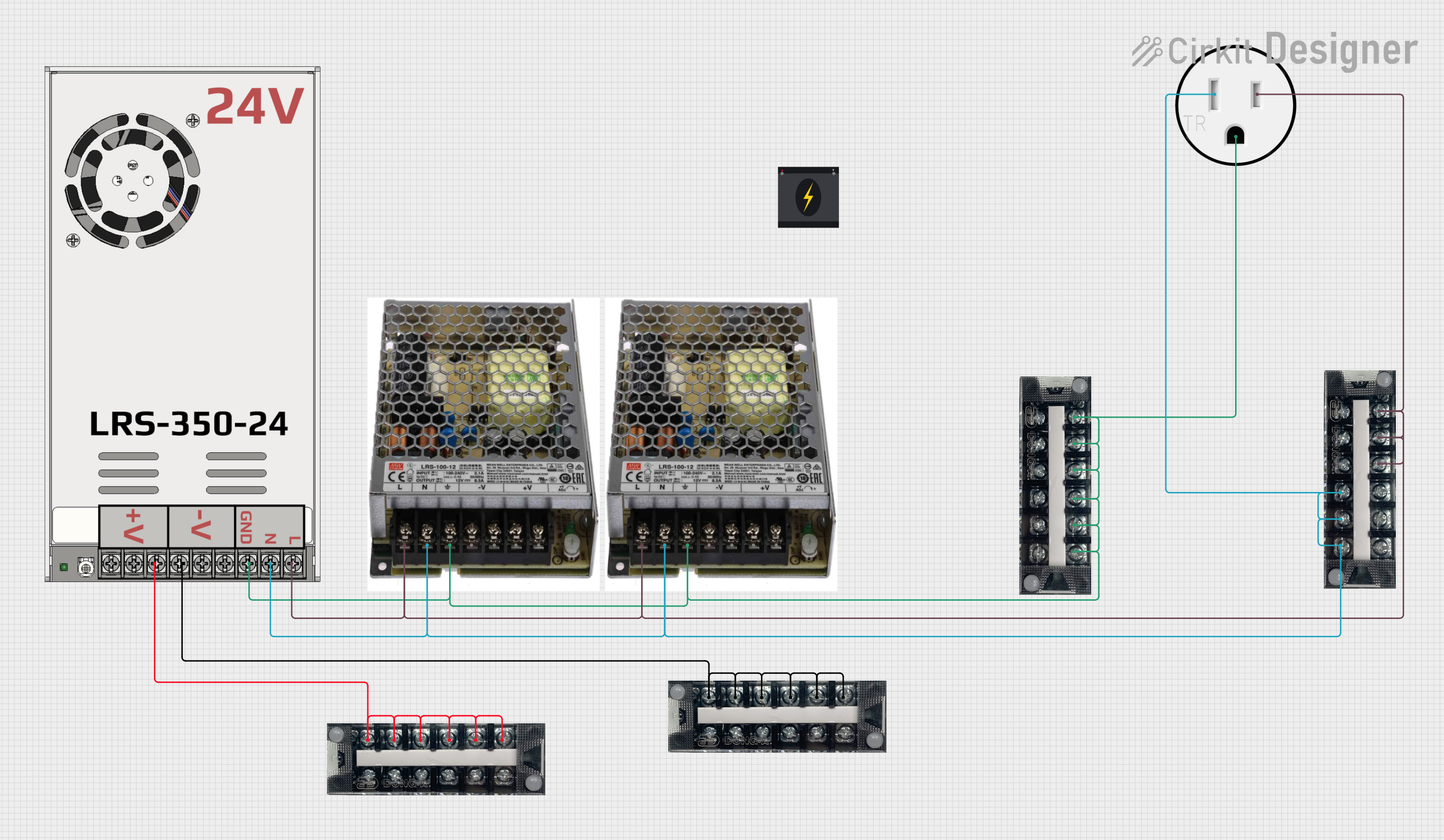
 Open Project in Cirkit Designer
Open Project in Cirkit DesignerExplore Projects Built with adaptor 12v

 Open Project in Cirkit Designer
Open Project in Cirkit Designer
 Open Project in Cirkit Designer
Open Project in Cirkit Designer
 Open Project in Cirkit Designer
Open Project in Cirkit Designer
 Open Project in Cirkit Designer
Open Project in Cirkit DesignerCommon Applications and Use Cases
- Powering LED strips and lighting systems
- Supplying power to small DC motors
- Operating routers, modems, and other networking equipment
- Providing power to Arduino boards and other microcontroller-based projects
- Charging or powering portable devices that require a 12V input
Technical Specifications
Below are the key technical details of the Adaptor 12V:
| Parameter | Specification |
|---|---|
| Input Voltage | 100-240V AC, 50/60Hz |
| Output Voltage | 12V DC |
| Output Current | 1A, 2A, or 5A (varies by model) |
| Power Rating | Up to 60W (depending on model) |
| Connector Type | Barrel Jack (5.5mm outer, 2.1mm inner) |
| Polarity | Center positive |
| Efficiency | ≥ 85% |
| Operating Temperature | 0°C to 40°C |
| Storage Temperature | -20°C to 70°C |
| Safety Certifications | CE, FCC, RoHS |
Pin Configuration and Descriptions
The Adaptor 12V typically uses a barrel jack connector. Below is the pin configuration:
| Pin | Description |
|---|---|
| Outer Sleeve | Ground (GND) |
| Inner Pin | +12V DC (Positive Voltage) |
Usage Instructions
How to Use the Adaptor in a Circuit
- Verify Compatibility: Ensure the device or circuit you are powering is designed to operate at 12V DC and does not exceed the current rating of the adaptor.
- Connect the Barrel Jack: Plug the barrel jack connector into the power input port of your device or circuit. Ensure the polarity matches (center positive).
- Plug into an AC Outlet: Insert the adaptor into a standard AC wall outlet. The device should now receive power.
Important Considerations and Best Practices
- Check Polarity: Always confirm that the device you are powering is compatible with the adaptor's center-positive polarity.
- Avoid Overloading: Do not connect devices that draw more current than the adaptor's maximum current rating (e.g., 1A, 2A, or 5A).
- Ventilation: Ensure the adaptor has adequate ventilation to prevent overheating during prolonged use.
- Use with Arduino: When powering an Arduino UNO, connect the barrel jack to the Arduino's power input port. The onboard voltage regulator will handle the 12V input.
Example: Using the Adaptor with an Arduino UNO
Below is an example of how to use the Adaptor 12V to power an Arduino UNO and control an LED:
// This example demonstrates powering an Arduino UNO with a 12V adaptor
// and controlling an LED connected to pin 13.
void setup() {
pinMode(13, OUTPUT); // Set pin 13 as an output for the LED
}
void loop() {
digitalWrite(13, HIGH); // Turn the LED on
delay(1000); // Wait for 1 second
digitalWrite(13, LOW); // Turn the LED off
delay(1000); // Wait for 1 second
}
Additional Notes
- If using the adaptor with a breadboard or custom circuit, you may need a barrel jack adapter or terminal block to connect the wires securely.
- For sensitive electronics, consider adding a capacitor across the power lines to filter any noise.
Troubleshooting and FAQs
Common Issues and Solutions
| Issue | Solution |
|---|---|
| Device does not power on | Check the connection and ensure the barrel jack is securely plugged in. |
| Overheating of the adaptor | Ensure the adaptor is not overloaded and has proper ventilation. |
| Incorrect voltage or polarity | Verify the device's voltage and polarity requirements before connecting. |
| Flickering or unstable power output | Check for loose connections or consider adding a capacitor to stabilize power. |
FAQs
Can I use this adaptor with a 9V device?
- No, using a 12V adaptor with a 9V device may damage the device. Always match the voltage requirements.
What happens if I exceed the current rating?
- Exceeding the current rating can cause the adaptor to overheat, shut down, or fail. Use an adaptor with a sufficient current rating for your device.
Is this adaptor waterproof?
- No, the Adaptor 12V is not waterproof. Avoid using it in wet or humid environments.
Can I use this adaptor with a battery charging circuit?
- Yes, but ensure the charging circuit is designed to accept a 12V input and matches the adaptor's current rating.
By following these guidelines and best practices, you can safely and effectively use the Adaptor 12V in your projects and applications.